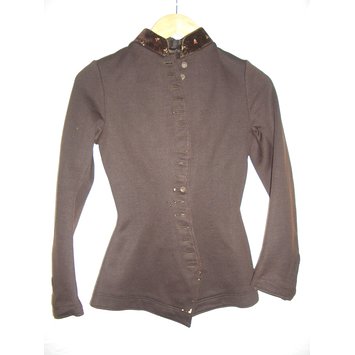So come with me and explore what the fashion-conscious middle class woman was wearing in 1887.
"Short skirts show the feet; and shoes are so much worn, that stockings become a consideration; they continue to be very elaborately embroidered and woven in a variety of patterns in open-work. Moreover, they are dyed to match every tone of colour..."
| Stockings ca. 1880-99, The Metropolitan Museum of Art |
(As you can see from the illustrations accompanying this article "short skirts" just skimmed the floor! They were, however, short compared to the dresses of the 1870s and early 1880s, which trailled on the ground.
Women's stockings were surprisingly colourful and ornamental in the nineteenth century. Decoration included stripes (very popular) and patterns, open-work, embroidery and lace insertions. They could cost up to 5 guineas a pair—very much above the price the average reader of Cassell's Family Magazine could afford to pay. Thrifty women who still wanted to be in fashion would buy stockings that had plain tops and decorated bottoms. In other words, they would only spend money on decoration where it was likely to be seen!)
 "Jerseys have become an institution for winter wear; they have been brought out in a thicker make of material, and there is plenty of variety in the make. Yokes, belts, piped runnings, Norfolk pleats, revers and military braidings ring many changes, and there is plenty of choice in colours. A new material—stockingnette and crape lisse combined—makes acceptable jerseys for evening wear. "
"Jerseys have become an institution for winter wear; they have been brought out in a thicker make of material, and there is plenty of variety in the make. Yokes, belts, piped runnings, Norfolk pleats, revers and military braidings ring many changes, and there is plenty of choice in colours. A new material—stockingnette and crape lisse combined—makes acceptable jerseys for evening wear. "(I'm not sure if the writer is referring here to "jerseys" as in the knitted upper garment, or "jerseys" as in a type of finely knitted cloth (usually made of silk or wool in the nineteenth century). Either way it meant their garments had a certainly amount of "give", while still retaining their shapes. Since bodices were extremely tight and and molded to the figure throughout the decade this would give women some freedom of movement, while still allowing them to be fashionable.
Incidentally, many fashion historians attribute the introduction of jersey as outerwear to Coco Chanel in the 1920s—clearly not the truth as this article shows! Perhaps this is a problem with treating fashion history as the story of the Great Designers, without looking at what people actually wore.)
 |
| Jersey jacket ca. 1880, V&A |
There is a large choice in all these durable sorts of collars and cuffs, and many are made of silk covered with black lace, with a bow in front, in form like a linen collar... At some of the milliners' and drapers' ready-made bows are sold, which almost trim a bonnet or form a head-dress in themselves.
(Cassell's suggested that women who were "clever with the needle" save money by making their own.)
"Our Paris Correspondent" chimes in to tell her readers about the latest trends in France:
....There is no doubt that the one leading idea just now is the Incroyable period in Paris—square double collars, double-breasted gowns cut in one with the skirt, are introduced in the redingote for out-door wear, and on the tea-gowns for in-doors.
(In other words, a nostalgic harking back to the 1790s! She goes into some detail about the latest styles, no doubt for her readers wishing to reproduce them at home.)
"Quite works of art and very beautiful are the trimmings of the season... Very pretty floral trimmings are to be seen on evening dresses ; the square and V-shaped bodices are outlined with ruches of of rose-leaves, of poppies, or laburnum, a tuft of flowers on the side ; these are continued to the point of the gown in front like a stomacher.
"... A great many women in France would seem to be wearing the coloured and printed percale underclothing, but there is nothing new in the making to chronicle. A very objectionable folly is gaining ground, viz, the wearing the minimum of clothes in order to reduce the bulk of the figure, with the result of laying the foundations of all sorts of illnesses and weaknesses.
"The petticoats for winter are made in pretty checks of silk or wool, as well as in the old stripes. The flannel petticoats, too, are of striped soft woolly materials with broad lace flounces."

No comments:
Post a Comment